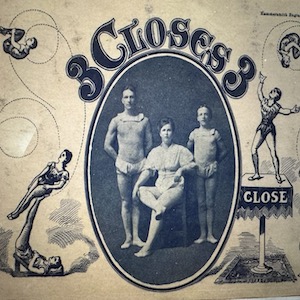Victorian Popular Culture
Victorian Popular Culture (VPC) is an engaging digital collection of unique primary sources describing popular entertainment in the US, the UK, and Europe from 1779 to 1930. The source materials include two of the world's largest collections of magical memorabilia-the Harry Price Library of Magical Literature at the University of London and the Harry Ransom Center at the University of Texas at Austin. This digital project divides the sources into four thematic modules. The first one is Spiritualism, Sensation and Magic, which explores the relationship between the popularity of Victorian magic shows and conjuring tricks. It also discusses the emergence of séances and psychic phenomena in Britain and America. The second module is Circuses, Sideshows and Freaks, which focuses on the Britain, American and European traveling entertainment in the 19th and early 20th century. The third one, Music Hall, Theatre and Popular Entertainment, celebrates both well-known and lesser-known forms of entertainments in the Victorian and Edwardian periods, such as variety, vaudeville, and ballooning. The final one is Moving Pictures, Optical Entertainments and the Advent of Cinema, which allows researchers to trace the history of cinema, from early visual entertainment to the burgeoning film industry and early film stars.
Victorian Popular Culture offers a rich and well-organized archive of historical texts and images of the topic. The home page lists five sections at the top of the screen: "Introduction," "Documents," "Visual Sources," "Explore," and "Help." By selecting the "Documents" section, users can choose to view all documents in the collection or explore one module only. The section allows users to search the documents through document type, library/archive, module, or alphabetical order. It also allows for precise searching by searching keywords, authors, titles, dates, and the type of sources (visual or secondary sources) in the tab "advanced search." The document types include correspondence, diaries, ephemerals, pamphlets, periodicals, printed book and scripts, and scrapbooks. The cross-searchability and thematic areas available for exploration help the user to understand how those four topics of modules interconnect together. Searching and browsing are easy, and most documents are full-text searchable. The entries also provide a series of metadata for each object, the presentation of results is intuitive, and teachers using the archive have the ability to add the selected items to a light box to create a personal slideshow, view the scan or a transcription of a document, or export selections as PDFs.
Users can find three subsections at the end of the “documents” page. The "Optical Entertainments" section offers users a chance to explore the images of the Victorian inventions and optical entertainments, as well as demonstrations of how they worked, and includes metamorphic views, panoramas and dioramas. The "Music Hall Songs" section contains audio files of old music hall songs (1899 to 1933) for users to play, along with the transcriptions of the lyrics and monologues. The "Early Cinema Footage" section contains the selected video clips from the British Film Institute (BFI) National Archive spans the formative years of film, 1894-1926. Some important films include one of the oldest surviving British films, Rough Sea at Dover; early examples of risqué Victorian films, and other special-effect films and comedies. Another important section is the "Visual Sources." The tab "Image Gallery" provides access to a variety of visual resources, including handbills, illustrations, pamphlets, playbills, postcards, posters, slides, stereoscopes, and advertisements. The "360 Object Gallery" section allows users to examine the raw materials and historical objects close-up. Teachers can also save their selections or run a bespoke slideshow for teaching and presentations.
Under the section "Explore", the tab "Venues" and "Biographies" allows users to explore the key entertainment venues and key figures in the world of American and British entertainment and popular culture from 1779 to 1930. The tab "Essays" features excellent scholarly essays for the four portal modules. For example, one of the essays "Popular Optical Entertainment" divides into seven parts and come with many illustrations. It offers a fascinating glimpse into the rich and wondrous world of Victorian and Edwardian visual entertainment. The site also has an interactive timeline with direct links into the database resource material; therefore, it provides superb historical context as well as placing inventions and persons chronologically. Finally, an extensive "Help" section offers search tips and advice for teachers such as how to cite a document from the resource, or how to copy an entire document and hold it as a series of image files to add it to their course materials.
Overall, Victorian Popular Culture provides rare printed content and visual resources to support teaching and research. The collections provided are truly unparalleled and available nowhere else. It explores the importance of magic, travelling entertainments, fairground arts, and other types of popular culture in the Victorian and Edwardian periods. Although some of the material in the collection may seem distasteful to our modern sensibilities, it conveys the range and extent of leisure activities and popular entertainments available to a growing number of people during the eighteenth and nineteenth centuries. It's a treasure for both novice readers and scholars who are interested in the history of popular entertainments.
